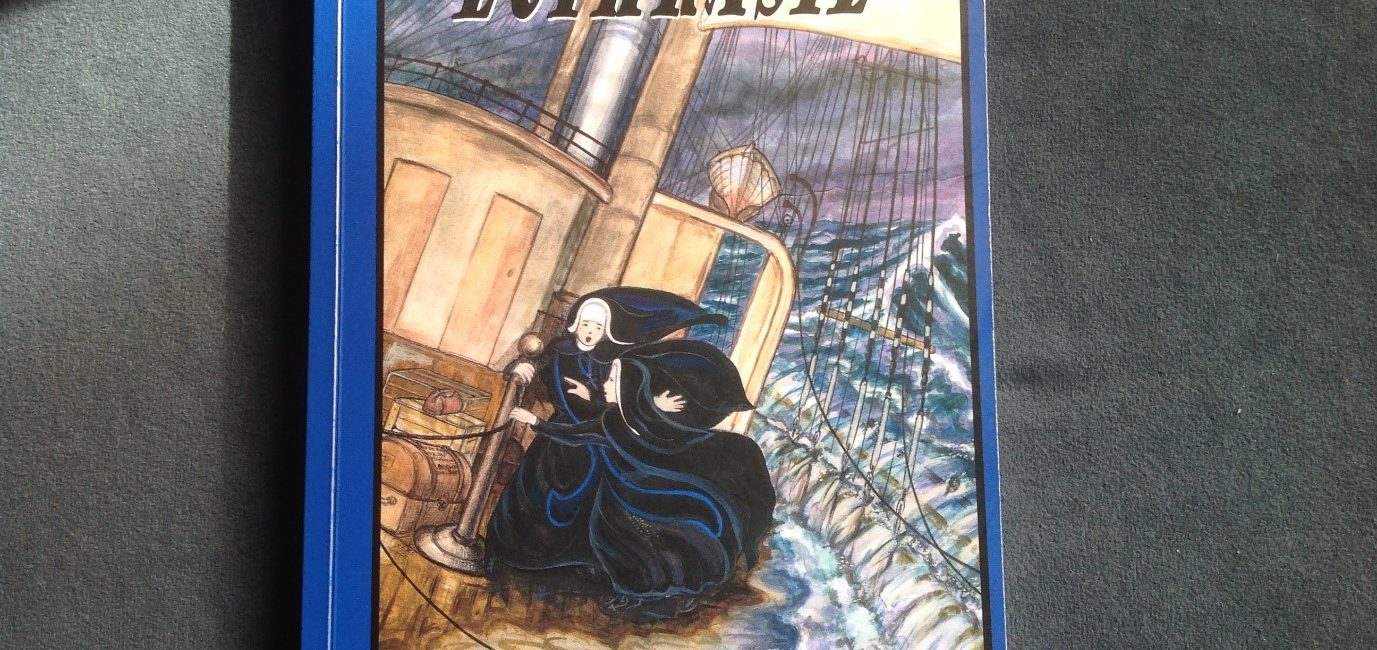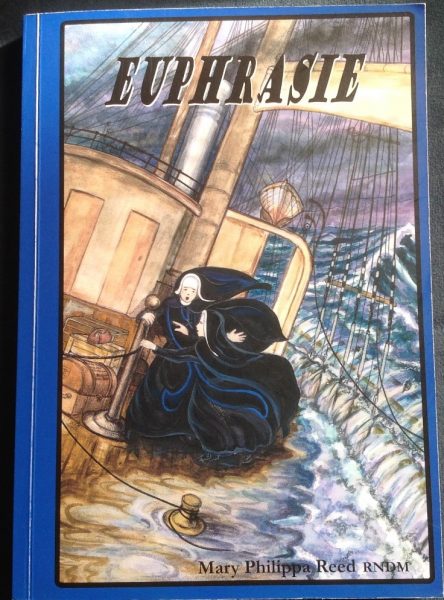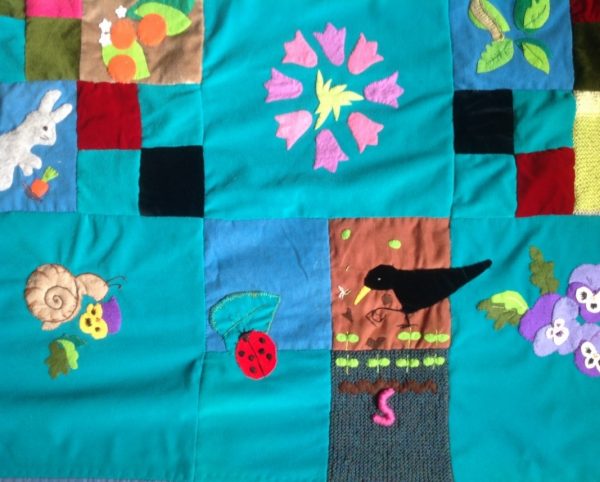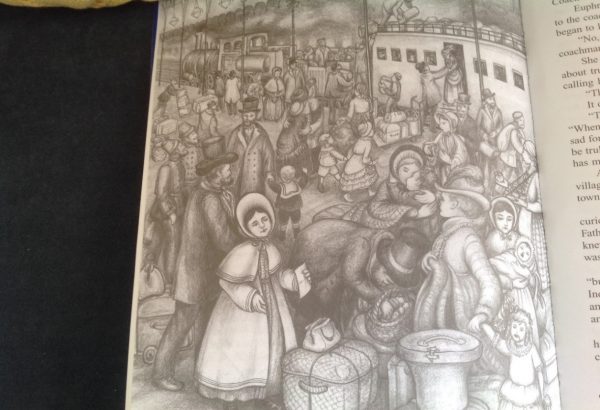
As an avid reader, panic would set in if I hadn’t stocked up when I remembered I’d finished the last of my library books. Now I find I panic less since if I can’t get to the library, I have access to what I call “people books”. No, not “talking books” for the hard of hearing, but some very interesting “people books”, autobiographies mostly that suit my preference for adult non- fiction. This new format is found in conversation stories with neighbours and visitors most of whom have led fascinating lives that they’d never thought of as fascinating.
The most recent was the story of a very interesting neighbour who told me about the first “Aha” moment for her, over 90 years ago, at the tender age of 3, that marked the beginning of a life time dabbling in various forms of art. It was when mother needed the toddler occupied while she was busy giving art lessons that little Gwenny had her first go at art using the bright yellow oil paint mum had prepared for her to colour in a cut-out cardboard flower. Even at 3 the little artist knew she’d done something special from the amazed expressions and the surprised tone in the response of the adults who were so impressed seeing the finished product, the petals perfectly coloured in with not a single drop of paint over the edge of even one petal. Obviously this little girl had the steady hand and the hand/eye coordination so important for an artist.
It wasn’t surprising, since both parents had an artistic bent. Mum was a school teacher and used her gift as an art teacher, teaching oils and water colour, just one aspect of this woman’s creative gift. One of the ways Mum nurtured the artistic talent in her children had been to paste on the bottom half of their kitchen wall the sort of paper that served as a type of blackboard for the children where their initial attempts as toddlers at writing and free hand drawing had free range. Good thinking on mother’s part this “writing wall” to avoid the temptation for the children to spoil the good wall paper .
While Dad’s dream, as a young boy, was to be an artist when he grew up. Sadly, the reality of not being able to earn a living as an artist meant he would have to think of another way to support himself and provide for a family. So a creative outlet for him as a Dad was to fashion toys for his children, much to their delight, from bits and pieces on the farm. On occasion he’d bring home a bucket of fresh white clay from the depths of a drain he’d been digging on the farm for the children to try their hand at pottery.
Gwenny discovered early on how drawing and painting transported her to another world, a world that would become her happy place, where she was lost in colours and shapes, and time would standstill. Another world providing an alternative happy place to which she could retreat was the world of books and she became a voracious reader at an early age learning how to read long before she went to school. There wasn’t a lot of money to spend on books at home but Dad had a set of the History of the British Empire. Gwenny spent hours pouring over the pictures in these books learning to read the captions underneath until eventually she could advance to reading chapters.
As time passed affirmation of her writing gift came by way of teachers’ refresher courses the young teacher, now Sr Philippa, regularly attended, where from assignments in writing some were selected and exhibited as examples of good writing. On numerous occasions her efforts were chosen and she realized she did indeed have a gift in writing, another aspect of her creative talents and the fruit of her vivid imagination fuelled by all the reading she did. Reading, writing and art were linked.
It was only a matter of time before she would combine into books these artistic strands of writing and drawing. The amazing detail to be found in the illustrations for her stories became a trademark of her style. For her it was important the illustrations were true to the verbal description of characters and things in the story. She would find it irritating reading a book where the illustrations didn’t correspond accurately or fully to the detail in the description, and would conclude, rightly, that the person who did the illustrations was not the author of the story. She would also research objects, clothing and places in the story to add to the detail in the illustrations to make them more authentic .
As an adult yet another string to her art bow was “making over” religious statues ,life size statues. In some cases this was a paint job, in others a more complicated repair was required before paint could be applied. This skill to work on statues was developed through opportunities given her by arty people who recognized her gift and were happy to share their knowledge and experience with her. When I’m watching the TV One programme “The Repair Shop” on a Friday night, I think to myself, Philippa could easily be employed there in almost any section of the Repair Shop. Alternatively, she could have her own NZ version of the Repair Shop.
Painting flowers on satin cushions early on was a different and very satisfying expression of her talent. As for quilting and patch work, well of course, that’s just another area of expertise where the most beautiful duvets and knee rugs with colourful scenes of various themes are turned out. A garden theme wont just have an array of beautiful flowers but everything else you might find in a garden: birds, worms, caterpillars, butterflies, a rabbit, so lifelike you think they’re about to crawl off the material.
In this present age of recycling we might forget that it was an art of our forebears. Young Gwenny recalls unpicking the seams in Grandad’s old trousers for mother to use the best part of the material to make a good pair of school shorts for her brother. So it’s no surprise to see her turning out, among other creations, a lovely recreation from the pretty jade green velour dressing gown passed its used by date.
Apart from a year studying art history at University and summer school art classes she took advantage of during school holidays, as well as absorbing information from books on the subject, this amazing “artist” was largely self taught, building up her files of pictures to provide her with models even before learning that was a good thing for artist to do. She learned on the job so to speak and admits she learned from her mistakes. She enjoys all forms of art so much so she couldn’t choose one over another.
A born multitasker Philippa has many things on the go at the same time: half way through a story on the computer, stopping to finish painting the latest statue, doing drawings to go with the current story being written, pencil first before colouring in, beginning a colourful patchwork using bits of material collected from cast offs and hand me downs, mending clothes that need a stitch here or there, taking a moment sitting on her bed reading, not to mention the regular breaks to head out to the garden to tend a vine, plant seeds, prune or take some cuttings and most importantly checking the composting, the wormery and the bokashi to make sure there’s plenty to nourish the soil and produce the flowers to create another work of art in the garden.
All this just part of her life as a nun for 70 plus years, many of which were spent teaching, others running a halfway house for mental health patients. Van Gogh wrote “There is nothing more artistic than to love people” and that aptly describes my neighbour, Sr Philippa Reed. 93 not out!
Barbara Cameron


